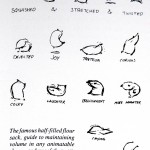I'm no hardcore gamer. I own a Wii and PS3, but they mostly gather dust. I've enjoyed some time playing Spider and Field Runners on the iPhone, but that's the limit of my attention. And occasionally I dust off Age of Empires on the Mac. Oh, and I strangely enjoyed playing Ramp Champ on the iPhone. What an odd game, there couldn't be anything simpler* to play the game at some level, just flick your finger up the screen. To play well, of course, is another matter.
So I'm as casual gamer as anybody. But I am desperately interested in gaming, and game development—game development is about building fun, engaging experiences, using motion, art, sound and flow. That's what we application creators want to do too, right?
Mac developers have always prided themselves on great looking graphics. And now we enter an age where that UI includes the subtle and practical use of animation and real-time graphical effects. Game devs have been working on making artistic, believable, fast and fluid OpenGL-optimized stuff for years, yet I've personally seen very little cultural crossover to date. I would love to see more cross-polinization from the game development community and Mac App development.
Tools-wise, I've been looking into Unity, a game-creation engine and development environment that seems to have become the winner in the space for creating physics-driven games. It seems like it could be a useful tool for mocking up and testing interfaces.
Now, of course, the 'game' experience and the App experience can be totally different things. Gaming can be all-encompassing, Apps simply a piece in a puzzle. Learning the interface of a game can be a fun experience, having to work out the interface of an App, an infuriating one. The same bright, loud and novel interface in a game might be completely tiring in an App, which instead aims to focus your attention on your content. Although, there are many hours spent in WoW (etc.) where I suspect any novel/distracting interface elements create the same annoyances as in an App.
I welcome the game developers** who are sniffing around after the iPhone App Store explosion. Come, share your wisdom.
*Ok, there is an interaction which could be simpler: a single button. And I'm proud to say I know a guy who's build an awesome game (Fishie Fishie) using just that.
** Oh and I should add that there's some great
Mac Game dev houses, bust 'serious' gaming is still very much on the PC, afaict
Click to read more ...
 Wednesday, June 2, 2010 at 11:31PM
Wednesday, June 2, 2010 at 11:31PM  Keith Lang | Comments Off |
Keith Lang | Comments Off | 



